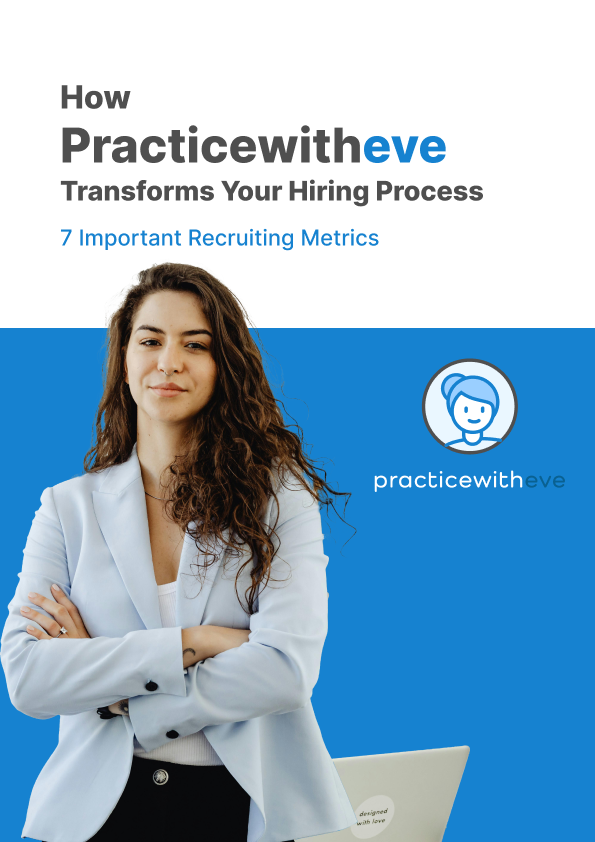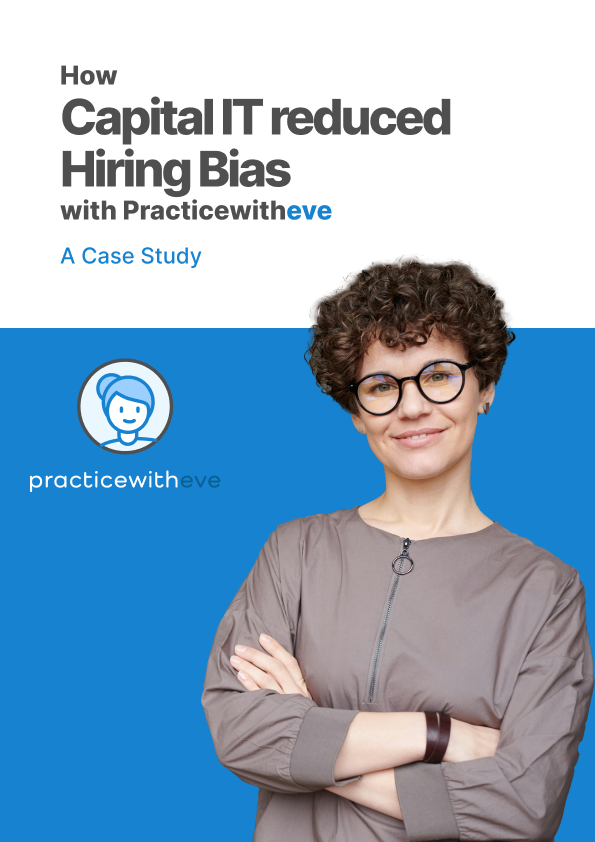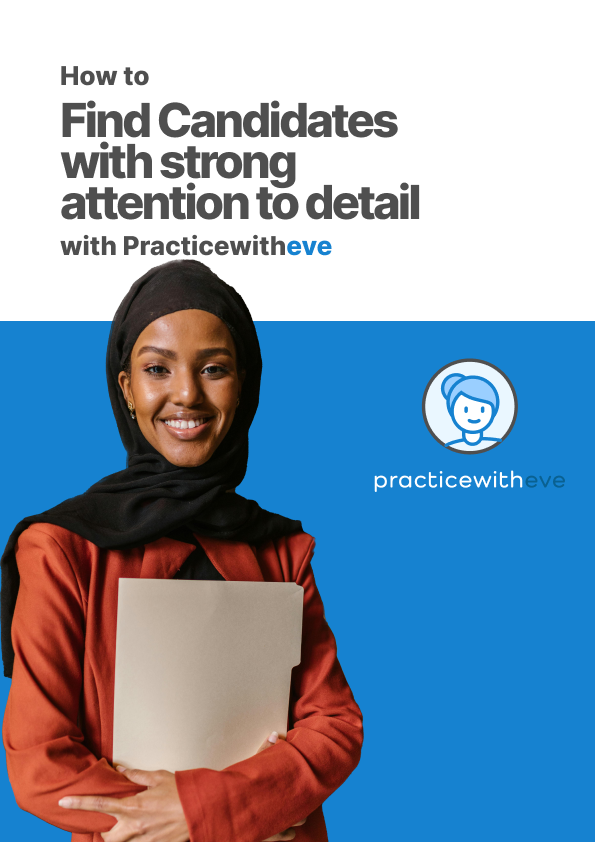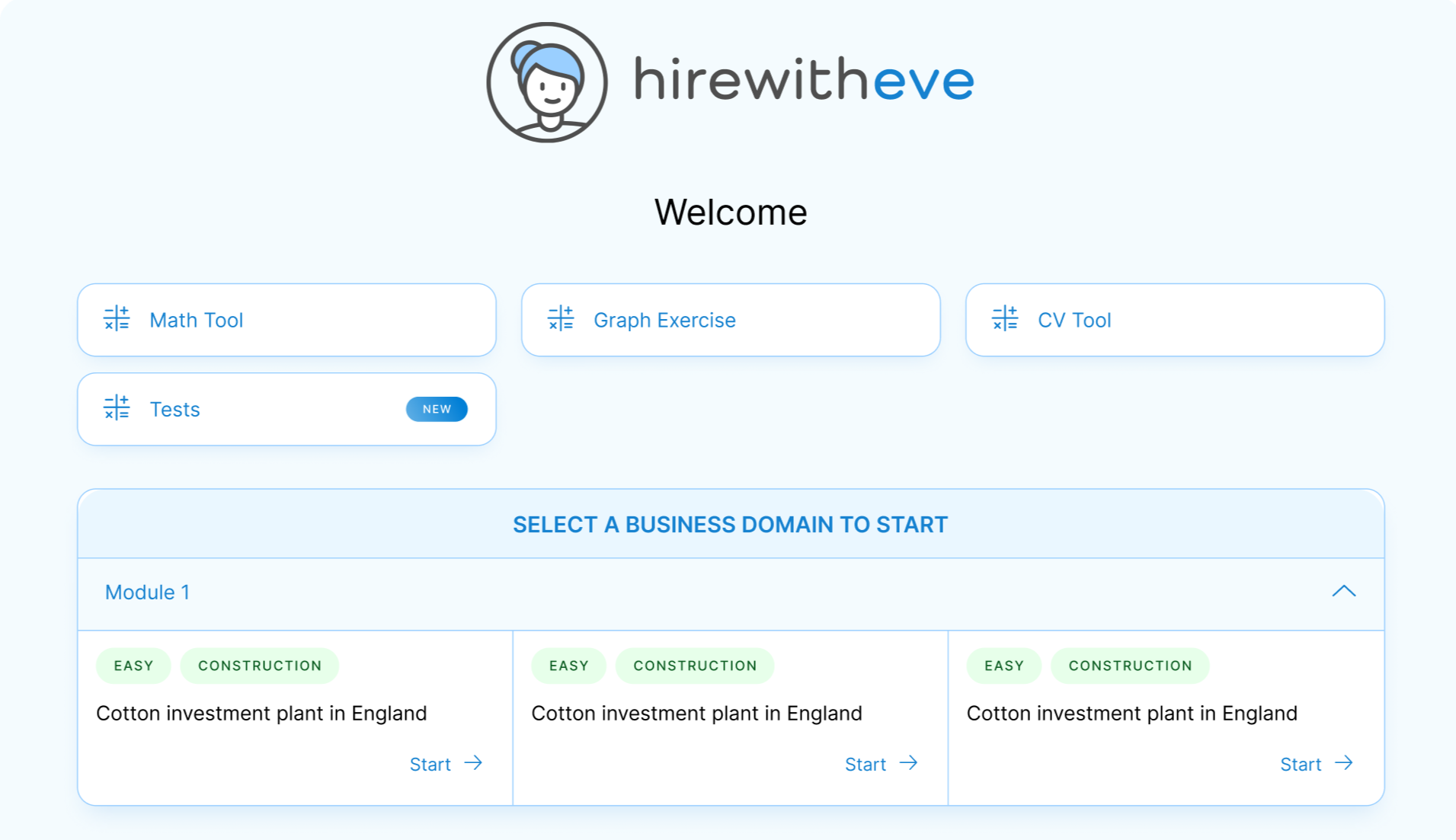Unbiased Hiring Practices: Combating Contrast Bias

Share
Hiring the right talent is a cornerstone of organizational success. However, unconscious biases like the contrast effect can undermine efforts to build diverse and high-performing teams. In this comprehensive guide, we delve into the intricacies of contrast bias, provide practical strategies to mitigate its impact, and highlight how HirewithEve can be an invaluable tool in achieving unbiased hiring practices.
Table of contents
What is the Contrast Effect?
Understanding Contrast Bias in Recruitment
Real-life Examples of Contrast Effect Bias
Strategies to Avoid Contrast Effect Bias
The Role of Skills Tests in Preventing Contrast Bias
How HirewithEve Can Help
FAQ's About Contrast Effect Bias
Conclusion
What is the Contrast Effect?
The contrast effect is a psychological phenomenon where the evaluation of one item is influenced by the comparison to a previously observed item. In recruitment, this can lead to candidates being judged not on their own merits but in comparison to other applicants. This bias can skew perceptions and result in unfair hiring decisions.
The Mechanism of Contrast Effect
In the realm of social psychology, the contrast effect occurs when we assess two things by comparing them against each other rather than evaluating each on its own. This altered perception often results in biased judgments, making one candidate appear more or less qualified than they truly are based on their comparison to others in the candidate pool.
Understanding Contrast Bias in Recruitment
In recruitment, contrast bias can significantly impact hiring decisions. This bias often surfaces when recruiters unconsciously compare candidates to those previously interviewed, rather than evaluating each candidate against a set standard. Such practices can lead to a lack of diversity, inconsistency in hiring standards, and ultimately, poor team dynamics and morale.
The Impact of Contrast Bias
Homogeneity in Workforce: Contrast bias can lead to a homogeneous workforce, which lacks the diversity needed for innovation and comprehensive problem-solving.
Inconsistent Hiring Standards: Evaluations based on comparisons rather than objective criteria result in inconsistent hiring decisions.
High Employee Turnover: Hiring the wrong candidate due to biased judgments can lead to higher turnover rates.
Low Team Morale: Poor hiring decisions can affect overall team morale and productivity.
Positive vs. Negative Contrast Effects
Positive Contrast Effect: Occurs when a candidate appears more qualified after being compared to less skilled applicants. This can lead to hiring less capable individuals simply because they seem better by comparison.
Negative Contrast Effect: This happens when a candidate seems less suitable after being compared to more impressive applicants. This can result in overlooking highly qualified candidates due to unfavorable comparisons.
Real-life Examples of Contrast Effect Bias
Technical Evaluations: A candidate with basic skills might appear more competent compared to one who performs poorly due to unfamiliarity with specific software.
Reference Checks: Candidates with glowing references might set a high standard, causing recruiters to undervalue other candidates with merely positive references.
Interview Process: Charismatic candidates can overshadow others, leading to harsher judgments of subsequent interviewees who lack similar personality traits.
Portfolio Review: A visually striking portfolio might make a subsequent strong but less impressive-looking portfolio seem inadequate.
Salary Negotiation: Early high salary negotiations can skew perceptions, making reasonable salary requests from later candidates seem less justified.
Strategies to Avoid Contrast Effect Bias
Mitigating contrast bias requires a conscious effort to adopt unbiased and structured approaches in the hiring process. Here are four effective methods:
Standardized Interview Methods
Using structured interviews helps ensure that all candidates are assessed against the same criteria, minimizing subjective judgments based on comparison.
Key Practices:
Ask all candidates the same set of questions.
Follow a consistent order when posing questions.
Focus on core competencies necessary for the role.
Use behavioral or situational questions.
Take detailed notes during interviews to base evaluations on facts rather than impressions.
Have multiple interviewers to provide diverse perspectives and minimize individual biases.
Confronting Systemic Bias
Addressing systemic bias involves recognizing and modifying organizational policies and practices that perpetuate stereotypes and disadvantages for specific groups.
Steps to Take:
Expand recruitment efforts to reach diverse candidates.
Ensure job descriptions are free from biased language and accurately describe necessary skills.
Use blind resume reviews to focus on skills rather than personal information.
Include interviewers from various backgrounds to provide multiple perspectives.
Conduct workshops and training to raise awareness of unconscious biases.
Establish clear procedures for addressing bias and promoting diversity and inclusion.
Replacing Resume Screening with Skill Testing
Relying solely on resumes can introduce the contrast effect. Skill testing offers a more objective approach by assessing the candidate's abilities directly.
Benefits of Skill Testing:
Provides data-driven insights into candidate's skills.
Reduces reliance on subjective resume evaluations.
Ensures a fair comparison based on relevant competencies.
The Role of Skills Tests in Preventing Contrast Bias
Skills testing is a powerful tool in creating an unbiased hiring process. By evaluating candidates based on their abilities, rather than arbitrary factors, skills tests provide a clear, objective measure of a candidate's suitability for a role.
Advantages of Skills Testing:
Objective Evaluation: Skills tests provide quantifiable data on candidate's abilities.
Fair Comparison: All candidates are assessed against the same standards.
Reduced Bias: Skills tests minimize the influence of unconscious biases.
Enhanced Diversity: By focusing on skills, organizations can build more diverse teams.
How HirewithEve Can Help
HirewithEve offers comprehensive talent assessments that help reduce hiring bias by objectively measuring skills and personality traits. By incorporating HirewithEve into your hiring process, you can ensure a more inclusive and fair evaluation of candidates.
Features of HirewithEve:
Customizable Assessments: Tailor assessments to evaluate specific skills relevant to your roles.
Data-Driven Insights: Access detailed reports on candidate's performance.
User-Friendly Interface: Easy to use for both recruiters and candidates.
Enhanced Diversity: Support for diverse hiring practices through objective skill measurement.
FAQ’s About Contrast Effect Bias
What is the contrast effect in HR?
The contrast effect in HR is a bias that occurs when comparing one employee or candidate to another, leading to distorted assessments based on relative comparison rather than individual merit.
What is the contrast effect in interviewing?
In interviewing, the contrast effect occurs when a candidate is judged based on their comparison to other applicants, affecting the evaluation of their skills and abilities.
What is a real-life example of the contrast effect?
A common example is performance reviews, where an employee may be judged more harshly or favorably based on the performance of colleagues reviewed around the same time.
How do you deal with the contrast effect?
To mitigate the contrast effect, use standardized evaluation criteria, conduct blind assessments, and educate hiring teams on recognizing and reducing biases.
Conclusion
Understanding and addressing contrast bias is crucial for creating fair and effective hiring processes. By implementing structured interviews, confronting systemic bias, and utilizing skills tests, organizations can make more objective hiring decisions. HirewithEve offers the tools and assessments needed to minimize bias and build diverse, high-performing teams. Embrace unbiased hiring practices today with HirewithEve.
The best advice in pre- employment testing, in your inbox.
No spam. Unsubscribe at any time.
TARGET YOUR TALENT
Unlock tailored solutions for your recruitment and hiring needs with Eve Platform's extensive case study library.
Free Resources

Transforming Hiring: 7 Key Recruiting Metrics
Enhancing recruitment processes with data-driven insights for better hiring outcomes.

Reducing Hiring Bias with Practicewitheve.
Utilizing Practicewitheve to combat bias and streamline recruitment processes effectively.

Hiring Detail-Oriented Candidates
PracticewithEve enhances hiring by accurately assessing candidate's attention to detail-oriented.








